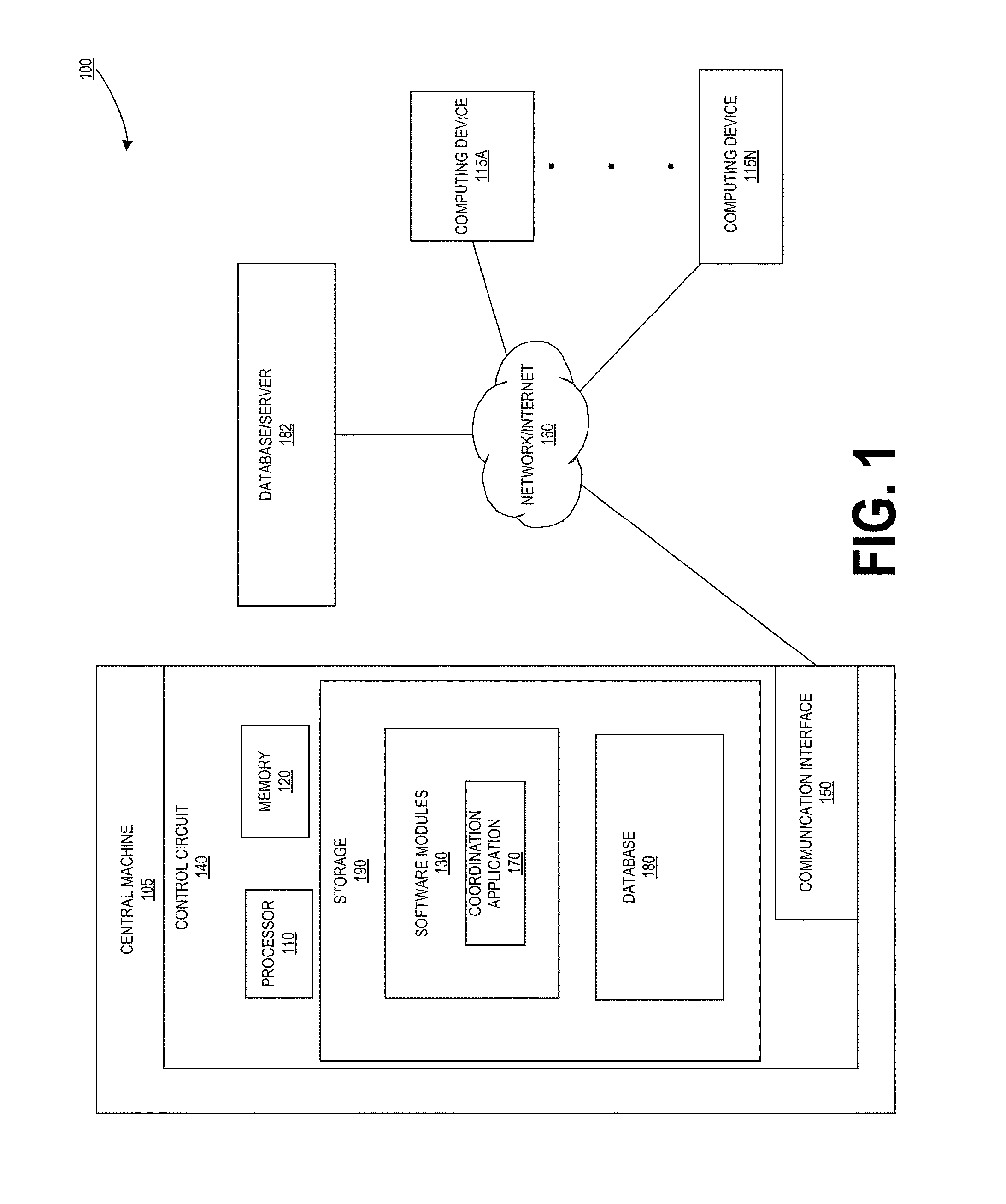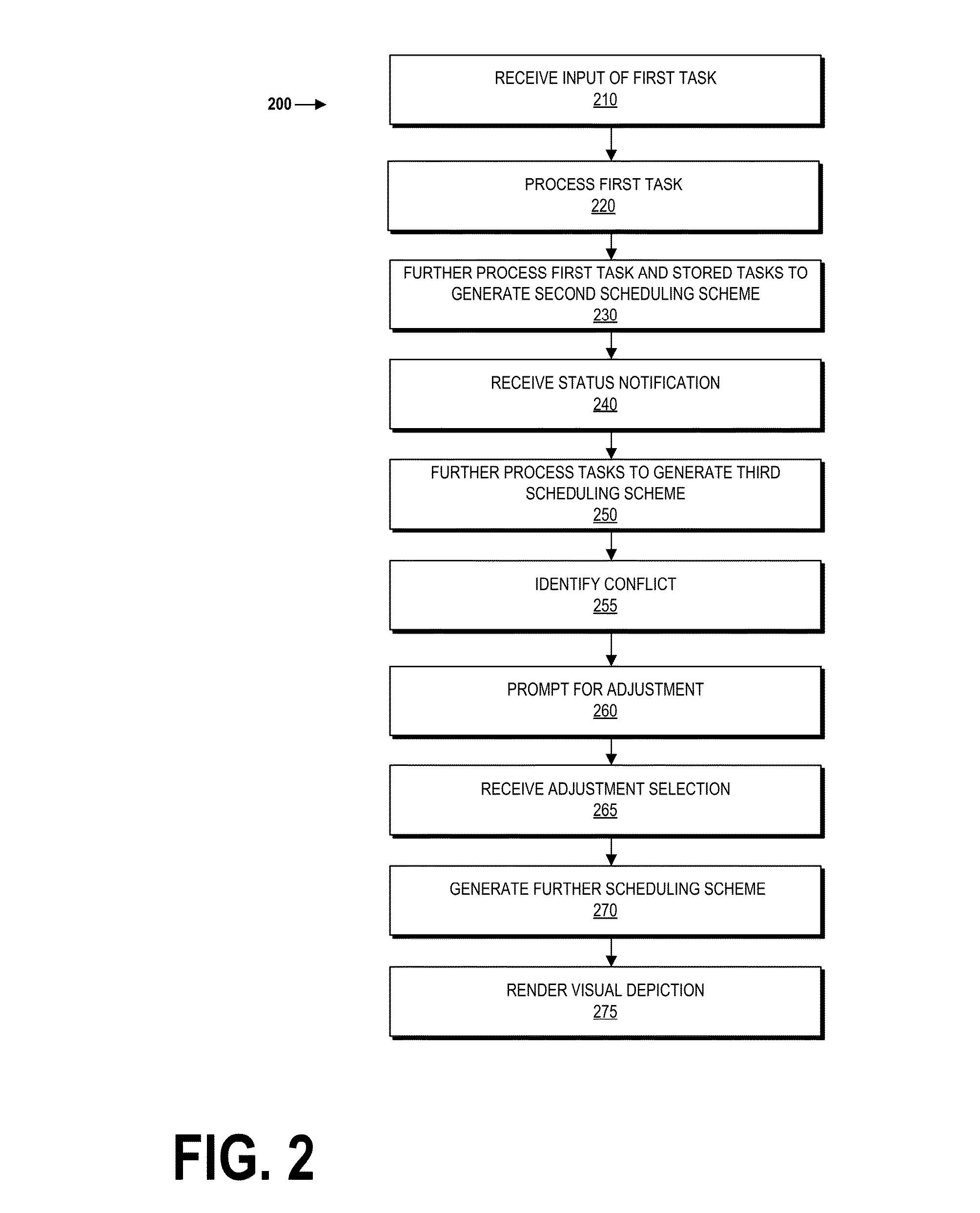System and method for dynamically coordinating tasks, schedule planning, and workload management
a task and schedule planning technology, applied in the field of dynamic coordination of tasks, can solve the problems of not properly accounting for the fact that not all tasks are done, the existing application is often ill equipped, and the task can be easily overlooked and/or forgotten
- Summary
- Abstract
- Description
- Claims
- Application Information
AI Technical Summary
Benefits of technology
Problems solved by technology
Method used
Image
Examples
Embodiment Construction
[0033]By way of overview and introduction, the present disclosure details systems and methods for dynamically scheduling and coordinating various tasks. It can be appreciated that each of the various tasks managed by a task management / scheduling application can have any number of scheduling constraints and requirements associated with it. For instance, certain tasks (e.g., meetings) must be performed and / or completed at specified times, while other tasks are more flexible by nature, though even such tasks preferably be completed by a specified deadline. Moreover, it is common for users to be unable to complete all tasks as originally scheduled, and thus certain tasks must be re-scheduled in order to enable their completion. Additionally, not all tasks are of equal importance, and such importance is rarely static (for instance, it may increase or decrease over time, as long as the task remains incomplete).
[0034]The systems and methods described herein enable the dynamic scheduling an...
PUM
 Login to View More
Login to View More Abstract
Description
Claims
Application Information
 Login to View More
Login to View More - R&D
- Intellectual Property
- Life Sciences
- Materials
- Tech Scout
- Unparalleled Data Quality
- Higher Quality Content
- 60% Fewer Hallucinations
Browse by: Latest US Patents, China's latest patents, Technical Efficacy Thesaurus, Application Domain, Technology Topic, Popular Technical Reports.
© 2025 PatSnap. All rights reserved.Legal|Privacy policy|Modern Slavery Act Transparency Statement|Sitemap|About US| Contact US: help@patsnap.com



